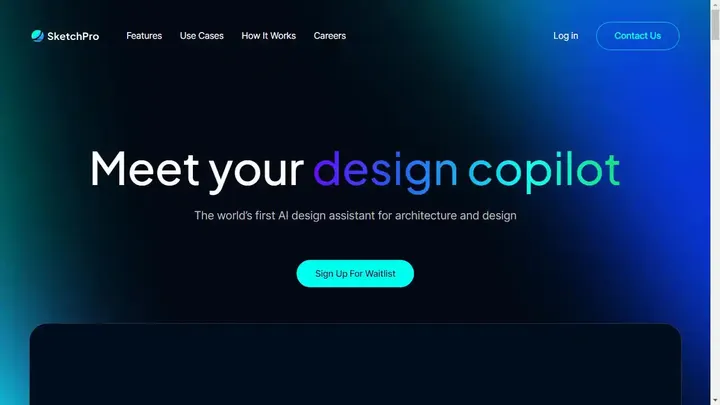SketchPro.ai: The Future of Design Rendering
Introduction to SketchPro.ai
As the digital age progresses, AI technologies are transforming industries across the globe — and architecture is no exception. SketchPro.ai is a pioneering AI-driven tool designed specifically for architects and designers. This innovative assistant empowers users to visualize and render their concepts in mere seconds, starting from a simple sketch or a complex 3D model. Thousands of architects and designers harness SketchPro.ai's capabilities to elevate their creative endeavors, underscoring its role as a transformative force in modern design.
Key Features of SketchPro.ai
Dive into the robust features of SketchPro.ai that blend creativity with efficiency. The tool offers two primary modes: the preliminary sketch mode and the detailed sketch render mode. These modes cater to various stages of the design process, allowing for unprecedented creative exploration with a 60% generation capacity. Users can input their own designs and let SketchPro.ai enhance them, maximizing creative output while minimizing time investment. This feature-rich tool integrates seamlessly into the designer’s workflow, promoting both innovation and accuracy in rendering.
How SketchPro.ai Works
SketchPro.ai utilizes cutting-edge AI technology to transform basic sketches into stunning, realistic renderings. It integrates into existing workflows, supporting architects and designers in achieving their creative visions effortlessly. By training its models on architectural precision, SketchPro.ai offers users the ability to personalize their experience by uploading their portfolio. This customization feature helps tailor the tool to meet specific design practices, ensuring compatibility and ease of use in professional environments.
Benefits of Using SketchPro.ai
Employing SketchPro.ai in design projects translates to significant benefits. The platform accelerates the design process, saving valuable time through its rapid rendering capabilities. This efficiency does not come at the expense of precision, making it a valuable asset for achieving high-quality design outputs. As a testament to its effectiveness, numerous testimonials and case studies highlight the tangible improvements in design accuracy and flexibility that SketchPro.ai facilitates.
SketchPro.ai Pricing and Plans
SketchPro Technologies has successfully raised $4,434,440, underscoring the confidence investors have in the platform's potential. While the specific pricing structure and plans are not detailed in the references, the investment itself highlights a strong backing and possible affordability aimed at a wide range of users, from individual designers to large architectural firms.
SketchPro.ai vs. Competitors
In a competitive landscape of AI design tools, SketchPro.ai distinguishes itself with its ability to transform sketches into realistic renderings in just 30 seconds. The tool's focus on architectural precision ensures high-quality outputs, giving it an edge over alternatives. SketchPro.ai allows users to incorporate their design nuances by uploading portfolios, a feature that enhances personalized rendering experiences and keeps the tool aligned with individual design philosophies.
Getting Started with SketchPro.ai
Embarking on your SketchPro.ai journey is straightforward. The platform provides tutorials that offer a comprehensive overview of its features and functionality. For ongoing support and updates, users can access various channels dedicated to enhancing their SketchPro.ai experience. These resources are invaluable for both newcomers and seasoned professionals looking to fully unlock the potential of this AI assistant.
Future of AI in Design: SketchPro.ai's Role
Looking ahead, SketchPro.ai is at the forefront of AI-driven design innovation. With a mission to revolutionize how the built environment is designed, this tool positions architects as creative directors, while AI assumes the role of an adept design assistant. As AI technology continues to evolve, SketchPro.ai is poised to lead transformative changes in the architecture and design industries, continually pushing the boundaries of what is possible in architectural creativity and execution.












